

NIH Curriculum Supplement Series for High School - Using Technology to Study Cellular and Molecular Biology. JoVE Science Education. This premier collection exhibits how to use standard pieces of laboratory equipment essential in many experiments, as well as how to perform basic laboratory functions.
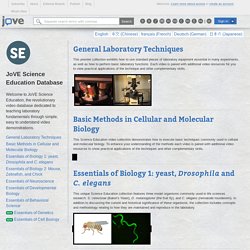
Each video is paired with additional video resources for you to view practical applications of the technique and other complementary skills. This Science Education video collection demonstrates how to execute basic techniques commonly used in cellular and molecular biology. To enhance your understanding of the methods each video is paired with additional video resources to show practical applications of the techniques and other complementary skills. This unique Science Education collection features three model organisms commonly used in life sciences research: S. cerevisiae (Baker’s Yeast), D. melanogaster (the fruit fly), and C. elegans (nematode roundworm). JoVE’s fifth Science Education collection provides an introduction to the field of neuroscience. National Centre for Biotechnology Education. : BioMath. Quorum Sensing: Organisms Communicating and Coordinating We live in an ever-changing world.
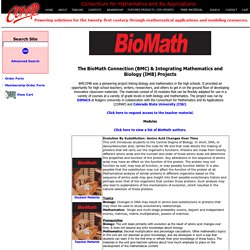
Many people crave information about those changes. As a result, new means of communicating are continually evolving. People originally relied on word of mouth. With the invention of the printer, newspapers spread information to more people, more quickly. Later, telephones, television, cell phones and the Internet increased both the rate at which people could communicate and the number of people that the information reached. Topics Biology: This unit discusses bacterial growth and communication. Prerequisites Biology: A basic understanding of cell structure and functions along with the Central Dogma would be helpful, but is not necessary.
Can Gene Editing Actually Do That? Hhmi. Potent Biology: Stem Cells, Cloning, and Regeneration.
Available for check out through Brandi – brandiwilliams
Index by Other Categories. Science for Kids: Exploring How Water Travels Through Leaves. The Biology Corner. Create a Stem Cell Line. : BioMath. Antibodies Part 1: CRISPR. Hhmi. What's a GMO? Medicine in the Genomic Era. Bioinformatics Activity Bank. Gene Therapy. Holiday Lectures on Science. Each autumn, leading scientists come to HHMI headquarters, where they speak to an audience of high school students from around the greater Washington, D.C., region.
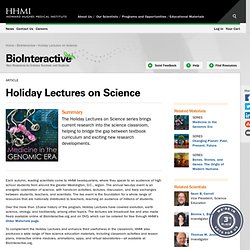
The annual two-day event is an energetic celebration of science, with hands-on activities, lectures, discussion, and lively exchanges between students, teachers, and scientists. The live event is the foundation for a whole range of resources that are nationally distributed to teachers, reaching an audience of millions of students. Over the more than 15-year history of the program, Holiday Lectures have covered evolution, earth science, virology, and biodiversity, among other topics.
The lectures are broadcast live and also made freely available online at BioInteractive.org and on DVD, which can be ordered for free through HHMI’s Order Materials page. Bioinformatics Activity Bank. Index by Other Categories. Overview of Blackett Family DNA Activity. Overview DNA Analyst Bob Blackett has graciously provided The Biology Project with sample data from his own work.
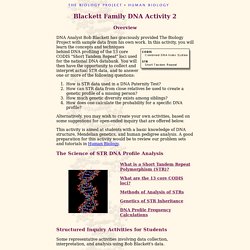
In this activity, you will learn the concepts and techniques behind DNA profiling of the 13 core CODIS "Short Tandem Repeat" loci used for the national DNA databank. You will then have the opportunity to collect and interpret actual STR data, and to answer one or more of the following questions: How is STR data used in a DNA Paternity Test? How can STR data from close relatives be used to create a genetic profile of a missing person? Alternatively, you may wish to create your own activities, based on some suggestions for open-ended inquiry that are offered below.
This activity is aimed at students with a basic knowledge of DNA structure, Mendelian genetics, and human pedigree analysis. The Science of STR DNA Profile Analysis Structured Inquiry Activities for Students. Tissue Engineering for Life. Take a tour of the bone and discover how old or injured bone tissue is constantly being replaced with new bone cells, in a process called remodeling.
Contact Brandi if you wish to borrow this DVD – brandiwilliams
These new cells come from the bone marrow, a veritable factory of adult stem cells.
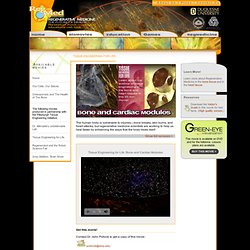
Doctors are studying these processes to figure out how to help bone heal faster and better. Most tissues in the body are less efficient at healing themselves. When trauma or injury occurs, the body replaces it with scar tissue, a weaker replacement of the original tissue. The heart is an organ that doesn't have a big regenerative capacity. Tissue Engineering for Life: Bone and Cardiac Modules Get this movie! Pollock@duq.edu Specs Produced with the support of: